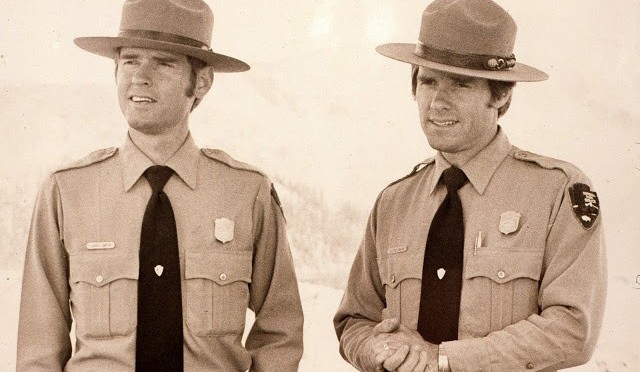As far as the stills he took?
I mean the negatives.
I doubt it. It sounded like he’d just given it to a relative.
Did he ever marry?
I don’t know. One of his nieces wrote a letter, and I’ll have to read it again and see if he did. He’s referred to as Uncle John. I thing the nice – Matilda Hall of Portland – is probably still alive. She sent some photos to us last year.
In answer to your question, the I&RM division was a trial period. It made sense on paper, but it didn’t make sense anywhere else. Invariably, the Chief of I&RM was a [patrol] ranger. So interpretation just suffered because they didn’t know anything about it.
The whole problem with “posey pickers.”
Yeah, there was always the putdown. That’s how you were able to put the GS-7 in charge, or maybe a GS-9, since all the attention was toward the law enforcement side of the division. In a smaller park, it would certainly make sense. But you would have to have somebody pretty well cross-trained. You are going to have to be able to run entrance stations, you’re going to be able to give evening programs, you’re going to be able to… I was on patrol one day and they called me in. They said you like history, and I’d been typing up my little memos. I was out riding around the rim when they called me on the radio and said please come to headquarters. “Oh no, what’s happening.” I go in and they say, “You’re going to be giving a program down at Mazama in two weeks. You better get working on it.” No training, no knowledge of how you go about this stuff, didn’t even know where the resources were. And I never got around to it and they never got around to it. That was it. But somebody, I guess, had to pass that message on to me that I was supposed to given an evening program. The thought of it, even though I was a schoolteacher at the time, terrified me. Getting up in front of adults was frightening because I was working with kids, and I didn’t want to work with adults.


